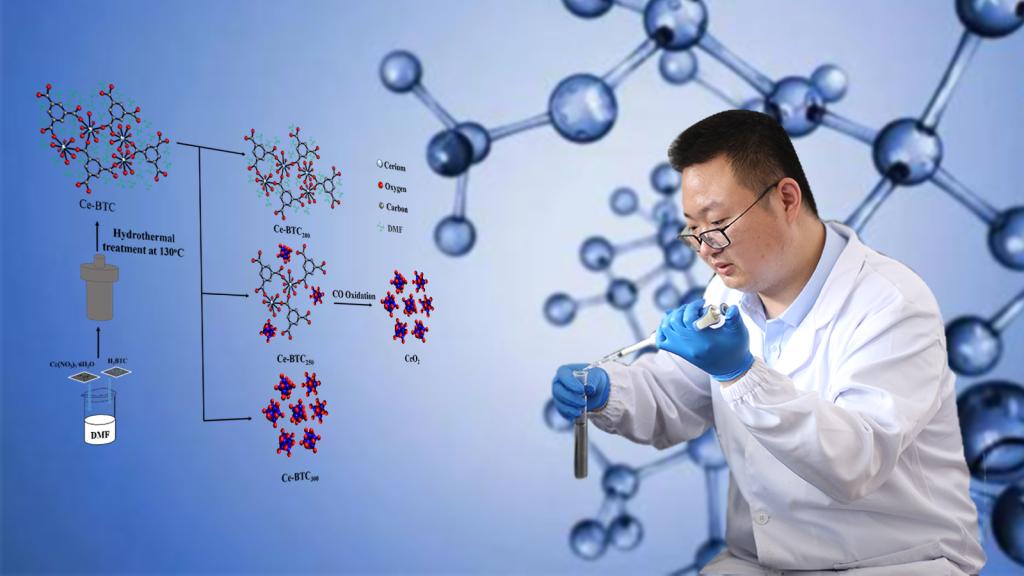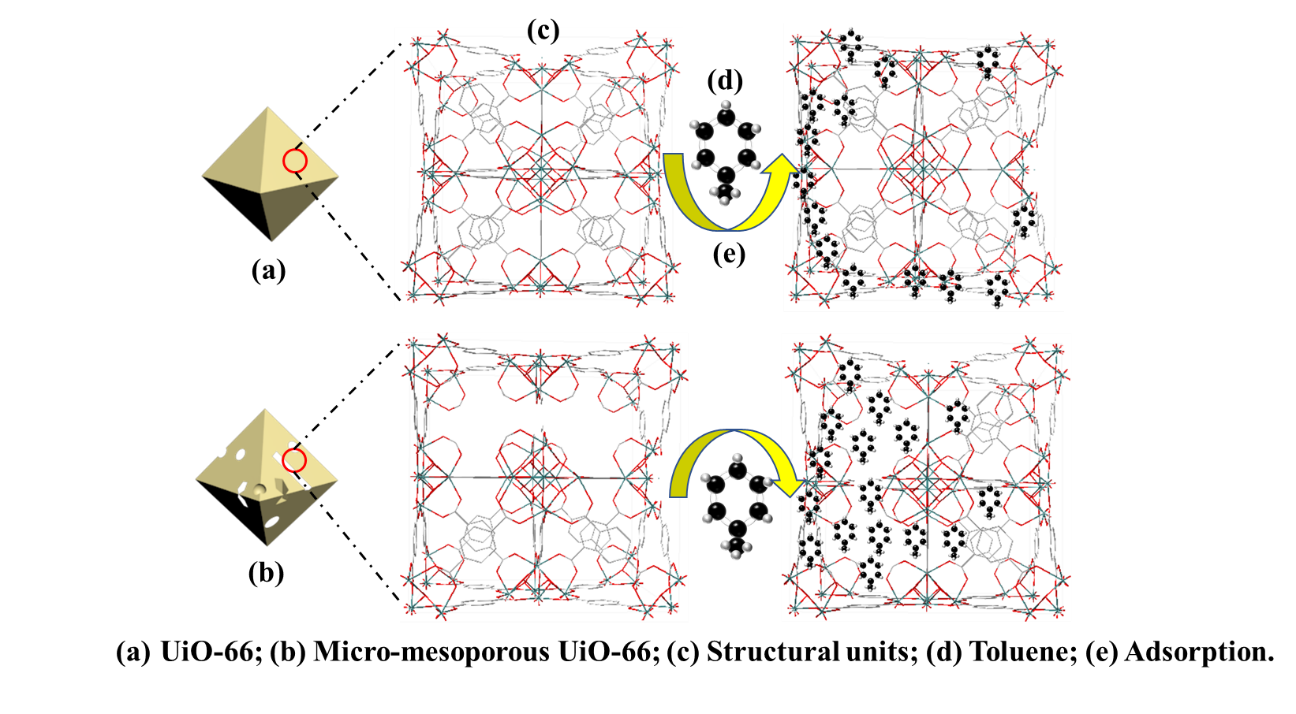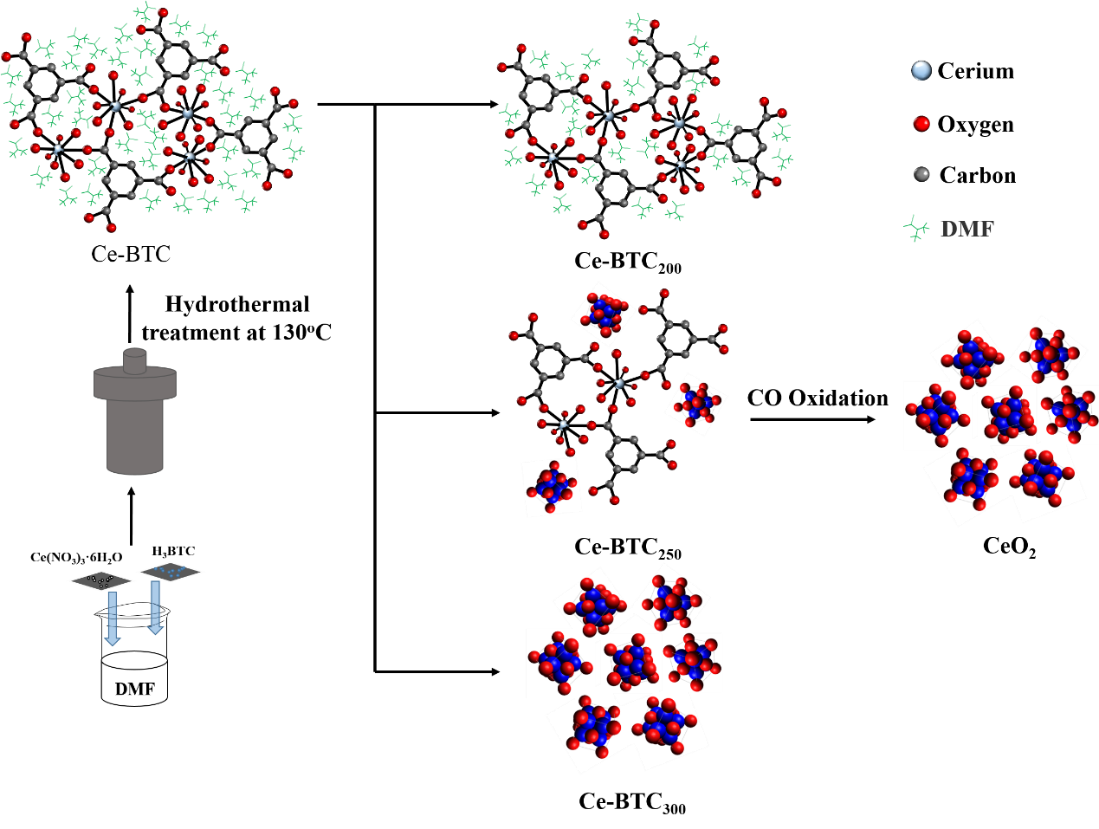
Dr. Zhang Xiaodong is an outstanding young teacher from USST, who has achieved a lot in his research filed in recent years. His research field can be briefly classified into three directions which are: Gaseous Pollutants Control, Water Pollutants Control and Environmental Catalysis & Material Preparation. To get more acquainted with Dr. Zhang, there has been an interview with him, which helps us to learn more about his contributions to environmental protection.
Metal Organic Frameworks (MOFs), a multidentate organic ligands and metal ions through a self-assembly process with a periodic network structure, is a kind of new material. MOFs materials have unique performance advantages, such as controllable pore size and modified pore surface, low density, a high surface area, which makes the new porous material which has been widely used in many fields, for example: storage and separation, drug delivery, chemical sensor adsorption, catalysis and photocatalysis. Based on our research fields, our research focuses on the preparation of MOFs modified materials and the application of environmental pollutants removal.
Firstly, Volatile Organic Compounds (VOCs) are serious air pollutants which have harmful effects on human health and the natural environment. Toluene is a typical VOCs pollutant with extensive sources including plants, volcanoes, vegetation, bacteria, fossil fuel deposits, and industrial discharge. The aim of our works is to prepare an MOFs material with a good toluene adsorption property. A series of modified UiO-66 (University of Oslo 66) was successfully synthesized by a simple solvothermal method. The physical and chemical properties were obtained by a series of characterization instruments. Some missing-linker defect sites were observed on modified materials (defective UiO-66) and are known as the main active sites for toluene adsorption. The defective UiO-66 (394 mg g-1) demonstrated 2.6 times toluene adsorption capacity of the pristine UiO-66 (151 mg g-1) (Figure 1). The interactions between toluene and UiO-66 and defective UiO-66 were assessed through the Henry’s law constant (KH) and the isosteric adsorption heat (ΔHads), which indicated that stronger interaction between defective UiO-66 and toluene molecules. Water temperature programmed desorption experiments revealed that defective UiO-66 had more hydrophobic properties, which provided a further possibility for a practical application for the removal of toluene.

Figure 1-A plausible adsorption mechanism of toluene on UiO-66 and defective UiO-66
Secondly, CO is one of the main sources of air pollution and causes many environmental problems. In order to obtain good catalytic activity, it is very important to develop a suitable catalyst. Here, a series of metal organic framework derivatives with a special morphology and a large surface area were prepared by a simple method. It is found that Ce-BTC calcined with O2 at 250°C (Ce-BTC250) maintains the special strawsheave-like structure, and the surface area rapidly increases from 42 m2g-1 to 648 m2g-1. Moreover, the prepared strawsheave-like Ce-BTC250 exhibited excellent catalytic activity, long-term stability and water resistance (Figure 2). urther studies have shown that the MOF structure of Ce-BTC250 was gradually converted to carbon-free CeO2 during the catalytic reaction. Interestingly, the catalyst after the reaction still has a large surface area (124 m2g-1) and strawsheave-like morphology. The improved catalytic activities may be due to the formation of porous and the large surface area of strawsheave-like Ce-BTC derivative, which provided more active sites and oxygen vacancy for CO oxidation. This work provides a novel insight into preparing high efficient carbon-free derivative with a large surface area by controlling synthesis and reaction conditions of Ce based MOF.

Figure 2- Schematic model of Ce-BTC calcined under different temperature
Finally, photocatalysis technologies have caused huge concern, because they can efficiently convert pollutants to H2O and CO2. Here, a series of MOFs based photocatalysts were fabricated via a simple solvothermal method. The physicochemical parameters, structural and electrochemical properties of MOFs based photocatalysts were investigated. It was found that the addition of moderate g-C3N4 could enhance the separation and migration rate of photo-induced charges, consequently leading to an increase of photocatalytic efficiency. The MOFs based photocatalysts exhibited better photocatalytic activity for the oxidation of Rh B under visible light irradiation. Meanwhile, the MOFs based photocatalysts showed excellent stability and reusability in four cyclic experiments. Finally, the increased photocatalytic reaction mechanism was also proposed. •O2-, h+ and •OH were further found to be the main active contributors.
A Brief Introduction of Dr. Zhang
Xiaodong Zhang is a Doctor, an Associate Professor and a Master Supervisor with more than 40 SCI articles (7 ESI papers) that have been published in the last five years. The Department of Environmental Science and Engineering, the School of Environment and Architecture, the University of Shanghai for Science and Technology have all been involved in his work. His research fields include: (1) Gaseous Pollutants Control (CO oxidation, adsorption/catalytic/photocatalytic VOCs removal, NOx removal); (2) Water Pollutants Control (adsorption/photocatalytic/microwave catalysis PPCP/PFOA/ disinfection by-products/ heavy metal removal); (3) Environmental Catalysis and Material Preparation (the preparation of MOFs based material.


